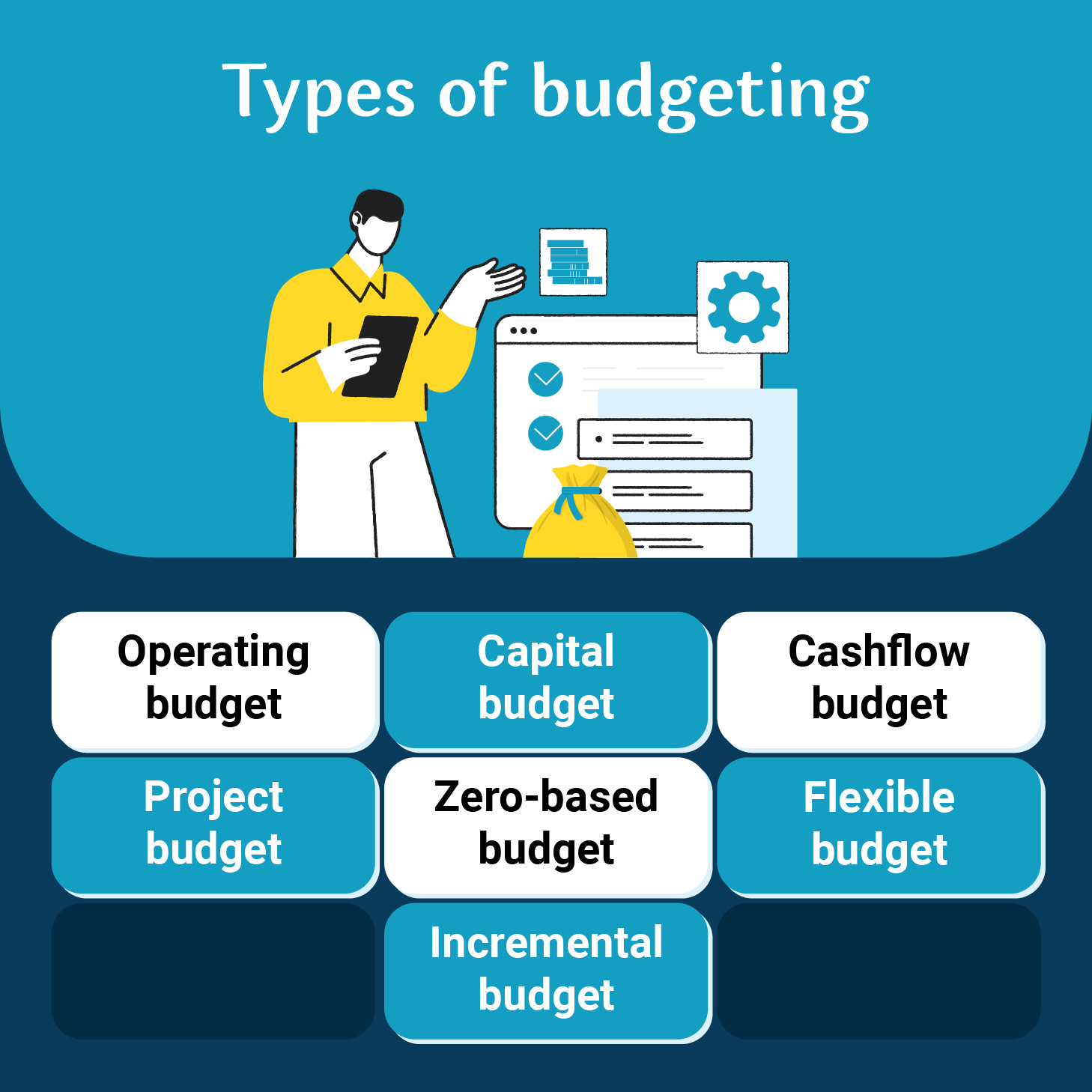Proper planning is, of course, the key to a successful business. When it comes to meticulous road mapping, budgeting, and forecasting are the strategies that one must know to leverage them to the maximum. However, understanding the difference between the two, and more importantly, how to balance them, is where true business resilience lies. Budgeting sets your targets; forecasting keeps you agile. Together, they help you navigate uncertainties, seize opportunities, and drive steady growth.
Let’s explore how to master budgeting and forecasting and keep your business plans sharp, realistic, and future-ready.
What is budgeting?
Budgeting is the process of creating a financial plan for a specific time frame, typically one year. It includes estimates of revenues, expenses, expected cash flows, and debt reduction. A key purpose of budgeting is to provide a baseline for comparing actual financial results, helping businesses measure performance and adjust strategies when needed.
Budgeting has shown to be especially important for small and medium-sized enterprises (SMEs). Studies have found that businesses using clear budgeting practices often see improvements in profit margins and financial planning. However, many Indian SMEs still under utilise formal budgeting techniques, which could limit their growth and financial control.

What is forecasting?
Forecasting is the practice of predicting future financial outcomes based on past and present data. While budgeting outlines what a company expects to achieve financially over a set period, forecasting focuses on predicting future outcomes based on current and past data. It helps companies anticipate future revenues, expenses, cash flows, and market trends.
Accurate forecasting allows small and medium-sized enterprises (SMEs) to better plan inventory, manage resources, and respond to market demand. It helps businesses adjust their strategies based on expected changes in the market or economy.

Difference between budgeting and forecasting
Budgeting sets the plan, while forecasting helps businesses stay agile and adapt to changing conditions. Both are essential tools for financial planning and decision-making. Here is a clear comparison between budgeting and forecasting, framed in a simple tabular format:
|
Aspect |
Budgeting |
Forecasting |
|
Definition |
A financial plan outlining what a business aims to achieve over a period. |
A prediction based on historical data and current trends. |
|
Purpose |
Sets goals and financial targets for the future. |
Estimates future outcomes to help guide business decisions. |
|
Time frame |
Usually created annually, but can be revised periodically. |
Updated more frequently (monthly or quarterly) as market conditions change. |
|
Flexibility |
Less flexible, serves as a fixed plan or benchmark. |
More flexible and adaptive to real-time data and trends. |
|
Data used |
Based on internal goals and planned strategies. |
Based on historical performance and market analysis. |
|
Focus area |
Focuses on expected revenues, expenses, cash flows, and debt. |
Focuses on predicting sales, market conditions, and future financial health. |
|
Usage |
Used to monitor and control financial performance. |
Used to adjust business strategies and prepare for future scenarios. |
Why do you need to compare budgeting and forecasting for a healthy financial year?
Comparing budgeting and forecasting is essential for maintaining a healthy financial year because both offer unique insights that, when used together, support better decision-making and financial control. Here’s how these tools help assess a healthy financial year.
- Tracks performance against goals: Budgeting sets financial goals for the year while Forecasting updates those expectations. Comparing both helps assess how well a business is meeting its targets.
- Improves financial accuracy: Forecasting is based on real-time data. Comparing it with the budget allows businesses to identify gaps and adjust operations to stay on track.
- Enhances decision-making: When businesses regularly compare the budget (plan) with forecasts (reality), they can make informed decisions quickly, especially in changing market conditions.
- Encourages accountability: Departments or teams can be held accountable when actual results deviate from the budget. Forecasts help explain those variances, whether due to external factors or internal inefficiencies.
- Supports risk management: Comparing budgeting and forecasting allows early identification of potential financial issues, giving businesses time to take corrective actions before they escalate.
- Enables strategic planning: Comparison of the tools helps leadership see the bigger picture—whether the company is on the right path financially or needs to rethink priorities or investments.
- Optimises resource allocation: Regular comparisons help ensure that money and resources are allocated where they are most needed or effective.
By continuously comparing budgeting and forecasting, businesses can maintain better financial health, respond faster to change, and achieve more consistent and predictable outcomes throughout the year.
[Related Read: 9 Proven Cash Flow Management Strategies for Business Growth]
How do budgeting and forecasting help businesses with financial planning?
While budgeting helps businesses define targets for revenue, expense tracking, and profits, offering a clear direction for financial decisions, forecasting uses historical and current data to estimate future performance, helping companies prepare for upcoming financial needs.
Budgets guide how to allocate funds across departments, projects, and investments to maximise returns, while with up-to-date forecasts, businesses can make timely decisions based on actual trends rather than relying solely on past assumptions. Comparing actual results with budgeted figures helps identify deviations early, allowing corrective actions. Forecasting enables businesses to respond quickly to shifts in market conditions, customer behaviour, or economic changes.
Both tools help enterprises anticipate cash needs and ensure sufficient liquidity throughout the year. Budgeting and forecasting align short-term actions with long-term business goals, keeping the company on a sustainable growth path. These, together, create a strong foundation for sound financial planning, better control, and smarter business decisions.
How to strike the right balance?
Striking the right balance between budgeting and forecasting is key to effective financial management. Here’s how businesses can achieve it:
- Start with a solid budget: Begin the year with a well-researched, realistic budget that sets clear financial goals, based on past performance and strategic plans.
- Use forecasting as a dynamic tool: Unlike budgets, forecasts should be updated regularly, monthly or quarterly, to reflect changes in market trends, customer demand, or internal operations.
- Compare regularly: Continuously compare forecasts with the budget to track progress and spot deviations. This helps in adjusting strategies before problems escalate.
- Stay flexible: While a budget is a fixed roadmap, forecasting allows for flexibility. Be willing to adapt the budget if forecasts show significant changes in business conditions.
- Involve key stakeholders: Engage finance teams, department heads, and leadership in both processes to ensure alignment and collective ownership.
- Leverage technology: Use financial planning software to automate data collection, streamline reporting, and improve accuracy in both budgeting and forecasting.
- Balance short-term and long-term goals: Use budgeting for long-term stability and forecasting for short-term agility, ensuring your business can stay grounded yet responsive.
Finding the right balance helps businesses stay on course while remaining adaptable in a fast-changing environment.
Conclusion
Budgeting and forecasting are both essential for effective business planning. Budgeting sets a structured financial roadmap, while forecasting offers flexibility to adapt to real-time changes. When used together, they help businesses stay aligned with goals, make informed decisions, and manage risks efficiently. Regularly comparing budgets and forecasts improves accuracy, resource allocation, and strategic direction.
When budgeting and forecasting are rightly balanced, long-term stability and short-term responsiveness are well-managed. A balanced approach is key to navigating uncertainty and achieving consistent success throughout the financial year, ensuring financial health, agility, and sustained growth in a dynamic environment.










